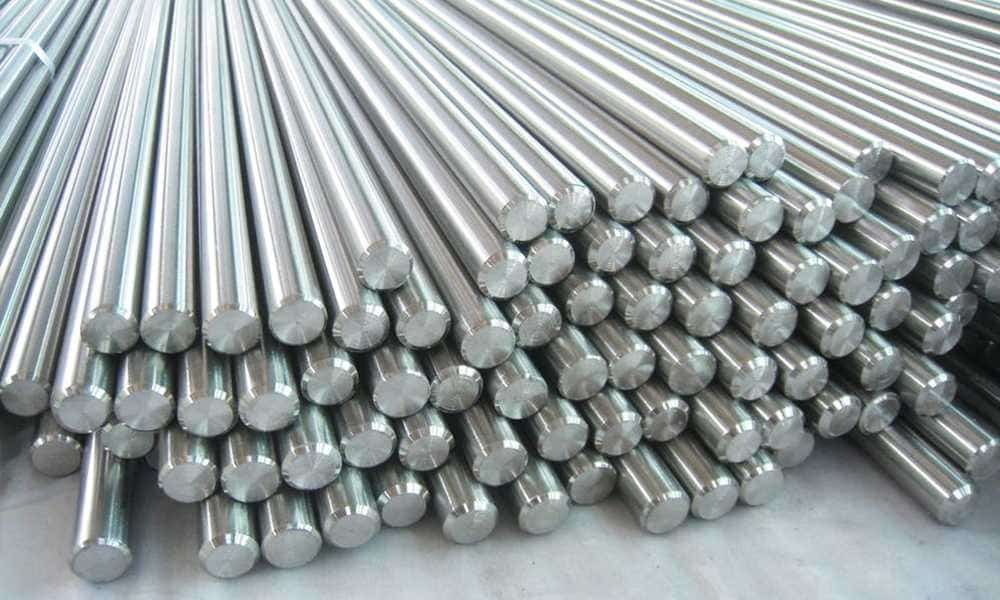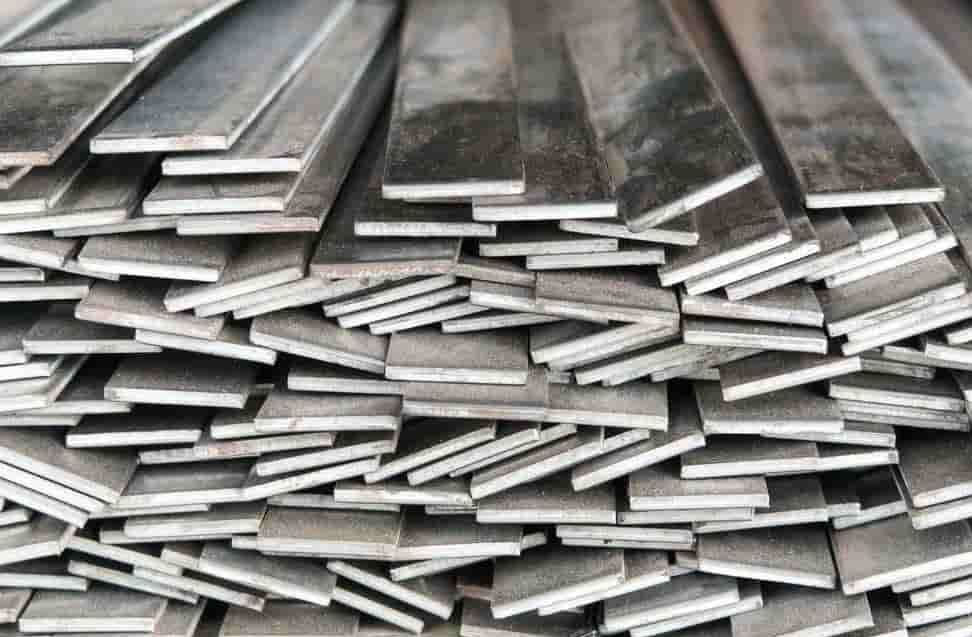The direct reduction of iron oxide is a process for the production of sponge iron, which is carried out in pelletizing plants and on production lines in the steel industry. Direct regeneration is achieved by four methods:
Midrex, HYL, Purofer, and Armco, which are mainly investigated in this article. These include chemical reactions, direct reduction theory, process units, and more.
The Midland Ross experimental method was invented by W.T. Marton and D. Beggs, and the necessary research was carried out at the Midland Ross Company in 1965. An experimental direct recovery unit producing 1.5 tons of sponge iron per hour was established in Toledo, Ohio, in 1967, followed by another unit at 150,000 tons per year in Portland, USA, which began production in 1969. Subsequently, other units were established at Georgetown and Hamburg Steel Works in the USA, which was established in 1971. The next unit was in Canada, launched in 1973.
In 1974, Korf Steel got Group permission to build a sponge iron plant according to the Midrex method. After that, other devices started using Midrex modules all over the world.
In the Midrex process, a shaft furnace or furnace is used to continuously regenerate solid iron oxide. The charge, including pellets and iron oxide lumps, moves down from the top of the furnace and is regenerated by hot regeneration gas (a mixture of hydrogen and carbon monoxide) flowing from the bottom to the top. The reduction of iron oxide occurs in reaction with H2 and CO.

The reducing gas in a gas shift reactor or Midrex process reformer is the reaction of natural gas (mainly methane) with the reduction furnace off-gas (mainly carbon dioxide and water vapor) and in the presence of a nickel catalyst.
After reduction of the iron oxide in contact with the reducing gas, the reduced material passes through the cooling zone of the reduction furnace and is cooled by the cooling gas. Finally, the sponge iron is taken with a temperature lower than 100 degrees Celsius and a metal quality of approx. 92% from the bottom of the oven.
The production of sponge iron, the production of reducing gas and the reduction of iron oxides are carried out continuously in the Midrex process.
In this process, pellets of iron ore (hematite) and lumps of iron ore (hematite) are regenerated in solid state and continuously with gases produced by partial oxidation of natural gas in a shaft furnace. The regeneration furnace is designed in the form of a cylinder according to the Medrex method.
For this, the feed is transferred to the top of the furnace and discharged into a funnel-shaped chamber. In this tank, the neutral gas flows continuously on its way to transfer the raw material to the furnace, which prevents the leakage of toxic flammable regeneration gas from the furnace to the outside.
The Midrex facility includes load transfer equipment for the recovery furnace, sponge iron discharge equipment for the recovery furnace, recovery furnace facilities, recovery gas production equipment, and other auxiliary equipment.
In the Midrex system, the load of pellets or crushed iron ore is cooled before entering the daily silo. Furnace loads are classified as follows:
- loads greater than 50 mm;
- Loads between 6 and 50 mm;
- the load is between 3 and 6 mm;
- and the load is less than 3 mm.

Charges of 6-50 mm and 3-6 mm pellets are fed to the regeneration furnace in proportion. Equipment is available for pelletizing or crushing iron ore in the Midrex process. In addition, the sponge iron produced by the recovery furnace is used directly after cooling before entering the silo, some units convert its slag into clay, and some units are used directly in the arc furnace.
In the Midrex unit, the load is transferred by conveyor belt from the day silo to a funnel-shaped feed tank located on top of the furnace. Pellets in this tank are used as backup when the conveyor is not in operation. In addition, particles can be discharged into this tank using a lift ship instead of a conveyor belt. The level of material in the tank above the furnace is determined by radioactive rods.
The rod is in contact with the load level on one side and the control system on the other, which automatically measures the load level. The uniform distribution of pellets in the regeneration furnace is of particular importance for the uniform flow of the regeneration gas between the pellets.
Since the load feed tank is open above the furnace body, to prevent gas leakage in the furnace, a neutral gas with a pressure slightly higher than the regeneration gas pressure is flowed into the furnace to prevent gas leakage in the furnace. The regeneration gas leaked out of the furnace.
The sponge iron pellets in the Midrex method are cooled after leaving the furnace. Soft iron sponge below 5 mm is normally used after solidification in steel-making plants. Sponge iron larger than 50 mm is crushed to particle size, transported to storage tanks, and stored there. Neutral gas flows in these tanks to prevent particle oxidation.

The sponge iron from the regeneration furnace is processed by a number of different methods, including cold sponge iron, hot briquettes (HBI), hot sponge iron transfer (HDRI) by direct charging to the electric arc furnace (Hotlink), hot sponge iron transfer conveyor belts.
Mechanical insulation and transfer of thermal sponge iron with tanks filled with neutral gas or nitrogen can be transferred to steelmaking furnaces.
The regeneration furnace in the Midrex process consists of an upper part and a lower part. The upper part of the furnace is the main regeneration area, which is a cylinder with a diameter of 4.8 to 5 m and a height of 9 m. The useful volume is about 20 cubic meters, but the total height of the furnace is 12 tov. 14 meters.
These regeneration furnace dimensions relate to similar furnaces at Ahvaz and Mobarakeh steelworks and may differ from those in other Midrex units.
In the Midrex process, the load in the form of crushed iron ore or iron ore pellets flows from the top to the bottom of the furnace, where it is converted into sponge iron over a period of approximately 6.5 hours in the regeneration zone.
regeneration gas. The regenerative gas enters the furnace from the top of the upper fragment through the belt tube and flows against the direction of the load drop. The gas is gradually cooled, and after removing the moisture from the particles, regeneration, and oxidation are carried out to a certain extent.

direct reduction iron Midrex method
The reduction temperature in the furnace in the Midrex method is adjusted to produce direct reduction of iron by the heat of the reducing gas. The oven temperature is automatically set to 760 degrees Celsius.
It is only in the upper part of the furnace, where the cold pellets enter the furnace, that the temperature drops sharply, so that the temperature of the gas leaving the furnace is about 450 degrees Celsius. During production, the gas pressure in the furnace is higher than the ambient pressure and reaches 1.8 bar.
The sponge iron produced by the Midrex process has a high porosity so that hot sponge iron can be reoxidized in the air.
For this purpose, the sponge iron is cooled in the lower part of the furnace with cooling gas to reduce its activity. In this part, soot and cementite formation may occur on the surface of sponge iron.
The lower part of the regeneration furnace in the Midrex unit is made into an incomplete cone. In this part, the sponge iron is cooled by a cooling gas that flows in a closed circuit and comes out of the furnace at a temperature of 30 to 50 degrees Celsius.
To avoid mixing the regeneration gas with the cooling gas from sponge iron flowing at the bottom of the furnace, the pressure of the cooling gas at the outlet is adjusted by the control system, which is equal to the pressure of the regeneration gas.
Enter the oven. For uniform cooling of the pellets, the pressure on the cooling gas is adjusted so that the pellets in the center of the furnace face the furnace walls, so they have enough time to cool.

Due to the contact and mechanical pressure between the sponge iron pellets in the regeneration furnace, it is possible for them to fuse together and form sponge iron clusters.
Therefore, a crusher is installed in the lower part of the furnace to crush the spongy iron mass that may form and to adjust the load current in the furnace. Cluster crushers are made of steel tubes with steel blades welded onto them.
The kinematics of the cluster crushers is hydraulic, and their rotation angles are periodically 22.5 degrees to the right and 22.5 degrees to the left. In order for the cluster crushers not to break the sponge iron and for them to have minimal wear and particles, their rotation speed is coordinated with the flow rate of the material in the furnace.
The rate at which the sponge iron is discharged from the furnace is regulated by vanes installed in the lower part of the recovery furnace and rotating back and forth. The faster the blades, the faster the material is ejected from the furnace.
These paddles dump the pellets onto the conveyor belt. A scale is installed under the conveyor belt to weigh the product.
The partial oxidation of natural gas in the Midrex process to produce regeneration gas is carried out continuously and regeneratively in a gas production reactor or reformer.
As a result, the natural gas, which is mainly methane, is partially oxidized by the oxidizing agent from the reduction furnace exhaust gas, which consists of hydrogen, carbon monoxide, water vapor, carbon dioxide and methane gas, and is mainly converted into hydrogen and then into carbon dioxide.
Midrex Reformer’s building was designed in the shape of a rectangular cube. The Mobarake steel reformer is 45 meters long, 20 meters wide and 18 meters high. The walls of the reformer are fireproofed with bricks and blankets to prevent heat transfer and energy loss.
In these reactors, hundreds of special steel tubes are arranged vertically in rows at regular intervals. For example, in a Midrex Modular 400 reformer, there are 288 steel tubes in 4 rows of 72. Our composite reformer tube has an OD or OD of 211 mm, a thickness of 11 mm and a length of 9 m.
The tubes are made of highly heat-resistant steel with 35% nickel, 25% chromium, high carbon, and niobium. The temperature inside the tube is about 1100 degrees Celsius, and high-pressure hydrogen gas is constantly flowing into it, so the consumption of the tube is large.
By passing the natural gas and the waste gas from the regeneration furnace into the high temperature of these steel pipes and the reformer near the catalyst, the morphological change and decomposition process of the natural gas is completed, and the regeneration gas H2 and CO are obtained.

The interior of these tubes is filled with three materials. A neutral material is placed in the lower part of the tube and has a high heat transfer capacity, suitable for heating the gas flowing in the tube to 800 degrees Celsius.
The second, a coating on neutrals, is a low-activity catalyst needed to accelerate the exchange of natural gas with a mixture of regeneration gas-exhaust gas and convert it into regeneration gas. The third material inside the tube is the active catalyst, which must have sufficient electrical resistance at temperatures around 1100 degrees Celsius.
The catalyst body consists of oxides of silicon, aluminum, calcium and magnesium, and its surface is covered with a thin layer of nickel or cobalt catalyst. The catalyst body used in Midrex reformer steel pipes is a hollow cylinder with a diameter and height of approx.











Your comment submitted.